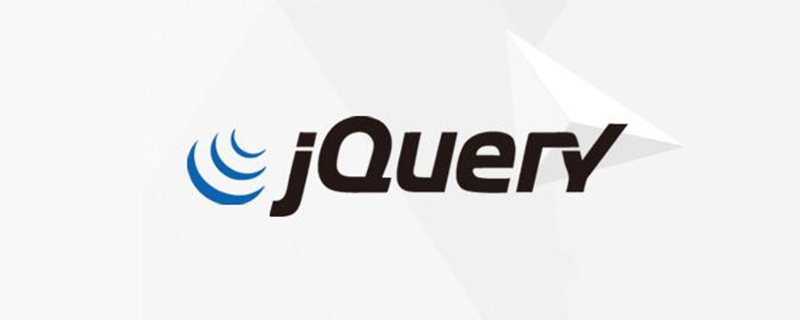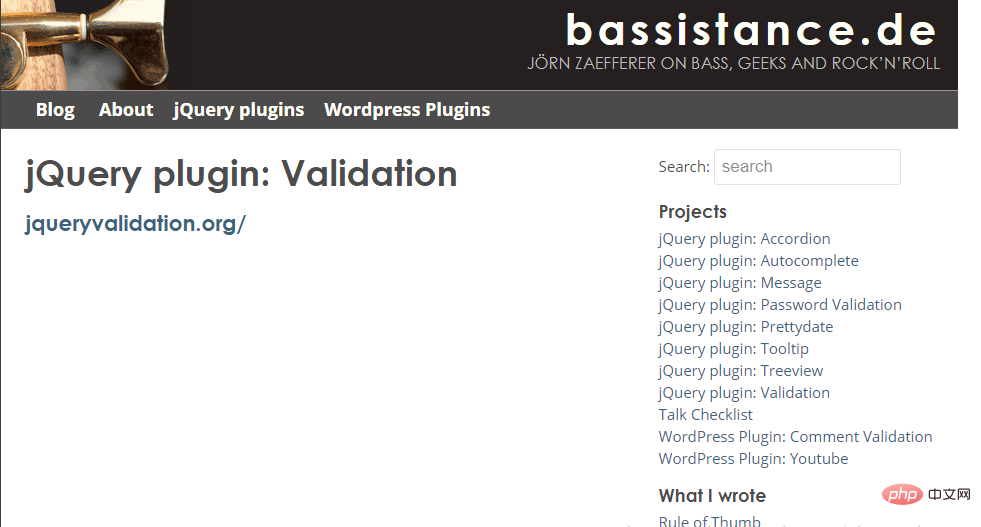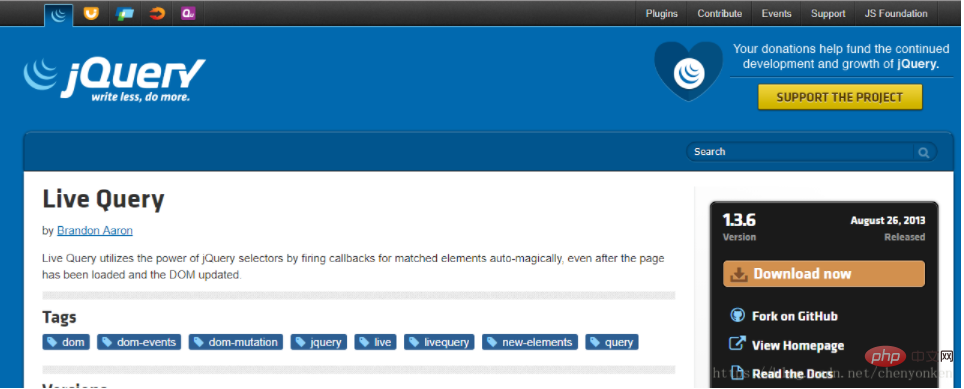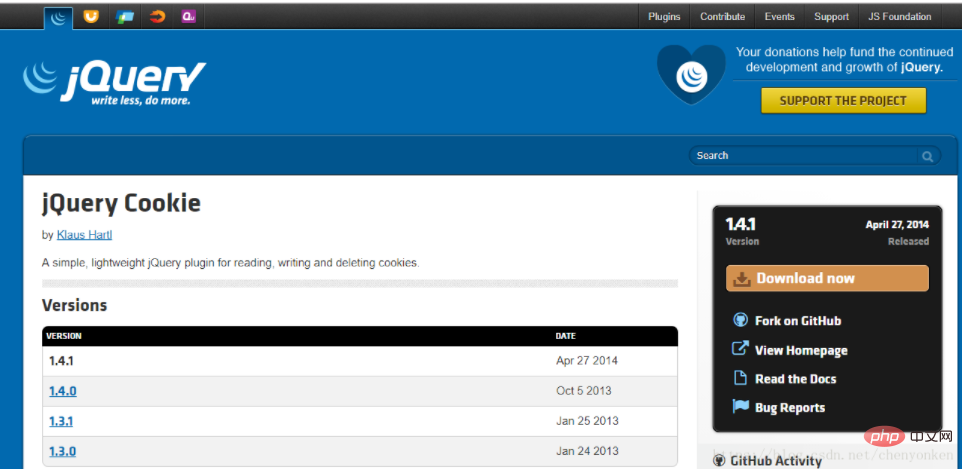
jquery plug-ins include: 1. jQuery form validation plug-in Validation; 2. jQuery form plug-in Form; 3. Dynamic binding event plug-in livequery; 4. Cookie management plug-in Cookie; 5. Modal window plug-in SimpleModal .

The operating environment of this tutorial: windows7 system, jquery3.2.1 version, thinkpad t480 computer.
jquery plug-ins are:
1. jQuery form validation plug-in: Validation
(1) Introduction to Validation
The most common occasion for using JavScript is form validation, and jQuery, as an excellent JavaScript library, also provides an excellent form validation plug-in - Validation. Validation is one of the oldest jQuery plug-ins. It has been verified by different projects around the world and has been well received by many web developers. As a standard verification method library, Validation has the following advantages:
Built-in validation rules: It has 19 types of built-in validation rules such as required, numbers, E-Mail, URL and credit card number
Customized verification rules: You can easily customize verification rules
Simple and powerful verification information prompt: The verification information prompt is defaulted, and Provides the function of customizing override the default prompt information
Real-time verification: verification can be triggered through keyup or blur events, not just when the form is submitted.
(2) Plug-in download address: http://bassistance.de/jquery-plugins/jquery-plugin-validation/
The official API address of the Validation plug-in is : http://docs.jquery.com/Plugins/Validation

2. jQuery form plug-in: Form
(1 ) Form plug-in introduction
jQuery Form plug-in is an excellent Ajax form plug-in that can upgrade HTML forms to support Ajax very easily and non-invasively. jQuery has two core methods - ajaxForm() and ajaxSubmit(), which combine functionality from controlling form elements to deciding how to manage the submission process. In addition, iain, the plug-in also includes other methods: formToArray(), formSerialize(), fieldSerialize(), fieldValue(), clearForm() and resetForm(), etc.
(2) jQuery Form form plug-in download address : http://jquery.malsup.com/form/. Readers can download the plug-in and view simple getting started instructions, API, example code, etc. on the website.
3. Dynamic binding event plug-in: livequery
(1) Introduction to livequery plug-in
jQuery’s event binding function makes jQuery code and HTML The code can be completely separated, so that the hierarchical relationship of the code is clearer and easier to maintain. However, for HTML elements that are dynamically loaded into the page, events need to be re-binded to these elements every time, which is very inconvenient. A new plug-in was born from this, namely livequery, which can be used to register the time for the corresponding DOM element or trigger the callback function. Not only will the element matched by the current selector be bound to the event, but also elements added later via JavaScript will be bound to the event. When the element no longer matches the selector, livequery will automatically cancel the event registration, so that developers no longer need to pay attention to the source of the HTML element, only how to write its bound events.
Select a DOM element through the jQuery selector, and the livequery plug-in will persist it in the entire DOM range in real time. This means that whether the element previously existed or was dynamically loaded later, the event will be bound, just like CSS styling the element. At the same time, this plug-in achieves these functions without taking up almost any resources.
(2) Download address of jQuery livequery plug-in: http://plugins.jquery.com/livequery/

##4. jQuery UI Plug-in
(1) Introduction to jQuery UI: jQuery UI is derived from a jQuery plug-in - Interface. The earliest version of the Interface plug-in was 1.2, which only supported the jQuery 1.1.2 version. Later, some people reconstructed most of the Interface representatives based on the jQuery 1.2 API and unified the API. Due to major improvements, the version number is not 1.3 but jumps directly to 1.5 and is renamed jQuery UI. jQuery UI is mainly divided into 3 parts, interaction, widgets and effect libraryEffect library. This library is used to provide rich animation effects, so that animation is no longer limited to the animate() method. The effects library has its own set of core, effects.core.js, and does not require the support of jQuery’s core library ui.core.js
(2) The download address of the jQuery UI plug-in is: http ://jqueryui.com/download/all/. Select the "jQuery UI 1.6rc2" link to directly download the complete package, including source code, distribution version and test driver.
5. Plug-in for managing cookies: Cookie
(1) Introduction to Cookie plug-in
Cookie is a small text file placed on the client by the website designer. . Cookies can provide users with many conveniences. For example, shopping websites store product lists that users have browsed, or portal websites remember which types of news users like to browse. When the user is running, the user's login status can also be stored, so that the user does not have to enter this information every time when visiting the website.
jQuery provides a very simple plug-in to manage cookies on the website. The name of the plug-in is also Cookie.
(2) The download address of the jQuery Cookie plug-in: http://plugins.jquery .com/cookie/

6. Modal window plug-in: SimpleModal
(1) SimpleModal plug-in introduction
SimpleModal is a lightweight jQuery plug-in that provides a powerful interface for the development of modal windows and can be used as a framework for modal windows. SimpleModal is very flexible and can create anything you can imagine, and you don't need to consider cross-browser issues in UI development.
(2) Download address of SimpleModal plug-in: http://www.ericmmartin.com/projects/simplemodal/
Related free learning recommendations: javascript(Video)
The above is the detailed content of What are the plugins for jquery?. For more information, please follow other related articles on the PHP Chinese website!